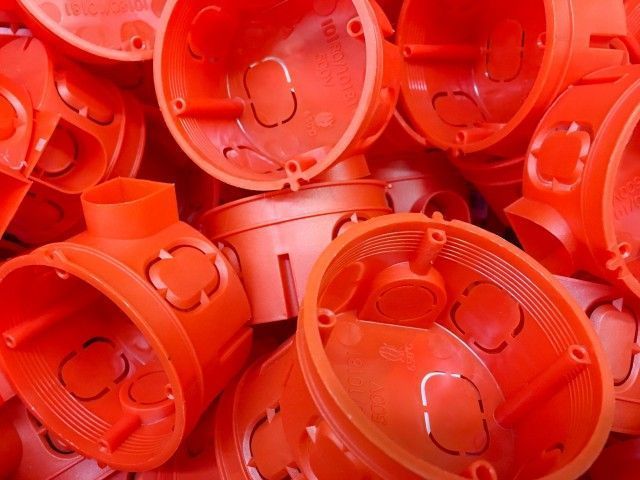LVD Test : IEC 60670 Standard
Boxes and enclosures for electrical accessories for household and similar fixed electrical installations
In today's market, junction box, box, enclosures in homes and similar places for electricity, telephone etc. circuits are used to collect and distribute the cables.
IEC 60670 standard covers the boxes, enclosures and parts of enclosures used for electrical auxiliary equipment whose rated voltage does not exceed 1000V AC and 1500V DC, intended for use in electrical installations in the home or similar places, inside or outside the building.
Type tests carried out in accordance with the IEC 60670 standard are carried out to check the general construction and compliance with the rules for junction boxes. Type tests are carried out by independent accredited laboratories. The type test of boxes and junction boxes also refers to the tests that need to be done to obtain “LVTCERT Certificate”.
In order to perform type tests in accordance with the IEC 60670 standard, the product standards are specified below ;
IEC 60670-1: General Rules
IEC 60670-21: Particular requirements for boxes and enclosures with provision for suspensionmeans
IEC 60670-22: Particular requirements for connecting boxes and enclosures
IEC 60670-23: Particular requirements for floor boxes and enclosures
IEC 60670-24: Particular requirements for enclosures for housing protective devices and other power dissipating electrical equipment
What is Type Test ?
The described tests in General rules and Product standard are mentioned as type test.The type tests are performed in an environment between + 10 ° C and + 40 ° C.
- Quality of Materials
- Mounting Method
- Input (Output) Type / Types
- Compaction Schemes
- Minimum Temperature During Installation
- Degree of Access to Hazardous Parts with Minimum IP2X Rating and Protection Against Harmful Effects Due to Entry of Solid Foreign Bodies According to IEC 60529
- Degree of Protection Against Harmful Effects Due to Water Entry According to IEC 60529
- Rules for Fastening Accessories to Boxes
Following the classification and conditioning, the type test is carried out as follows.
Marking
In this type of test, the information of the manufacturer, IP degree of protection, etc. information is checked. After these checks, 15 seconds of pure water and 15 seconds of petroleum ether are tested to check the indelibility of the marking. Marking should be easily readable after 30 seconds.
Dimensions
Dimensions are carried out by checking the conformity of the manufacturer's declarations.
Protection Against Electric Shock
Test sample is assembled as in normal use. A force of 20 N is then applied for 1 minute with the test probe 11 specified in the IEC 61032 standard. At the end of the tests, the tensioned sections of the probe should not enter the sections of the enclosures installed according to the manufacturer's instructions. For samples classified according to clauses 7.1.1 and 7.1.3, the test is carried out at + 35oC.
Earthing
This type of testing is carried out for test specimens with a grounding device. It is verified that the exposed conductor sections are actively connected to the external protection conductor in the 25 A 'test current and the resistance does not exceed 0.05 ohm'.
Construction
In this type of test, hinged lids are made to verify the removal or non-removal of lids or cover plates. These tests are carried out with the test probes and devices specified in the standard.
Resistance to Protection Against Harmful Entry of Solid Aging and Water
* Aging resistance; All accessories on the sample must be tightened with the forces specified in the standard and placed in a heating cell at 70oC. It is kept in the heating cabinet for 168 hours. Then, the sample is removed from the cabin and left at room temperature for 96 hours. For the type test to be positive, the sample must not be damaged or damaged. Additionally, difference tests are applied according to classification and changes.
* Protection against entry of solid objects; The test is carried out according to the manufacturer's declaration in accordance with the IEC 60529 standard. In order for the type test to be positive, it must meet the compliance criteria in the IEC 60529 standard.
* Protection against harmful ingress of water; The test is carried out according to the manufacturer's declaration in accordance with the IEC 60529 standard. In order for the type test to be positive, it must meet the compliance criteria in the IEC 60529 standard.
Insulation Resistance and Electrical Strength
To carry out the type test, it must be conditioned at a relative humidity of 91% to 95%, at a temperature of 20oC to 30oC in the period specified below.
* 2 days for enclosures classified as IPX0 degree of protection
* 7 days for other enclosures
* Insulation Resistance; The resistance is measured at a voltage of 500 V DC. The measured resistance value should not be less than 5MΩ.
* Electric Strength; In accordance with the insulation voltage declared by the company, the test voltage level is selected from Table-6. At this test voltage, the type test is applied for 1 minute. For the type test to be successful, there should be no discharge during the test.
Mechanical Strength
In this type of test, an test is carried out in accordance with the classification made. Impulse tests are applied to the sample in the appropriate test setup and temperature determined according to the classification. At the end of the test, there should be no deformation and deformation in the sample.
Heat Resistance
Type test is carried out in sections made of insulating material in accordance with the IEC 60695-11-2 standard. The test is carried out at the appropriate test temperature and the trace diameter measured at the end of the test must not exceed 2 mm.
Insulation Resistance of Abnormal Heat and Fire
Type test is applied to sections made of insulating material in accordance with IEC60695-2-11 standard. The glow wire test is applied for 30 seconds at the appropriate test temperature. At the end of the test, there should be no visible flames and permanent redness, or the flame and redness in the sample should disappear within 30 seconds after the glow wire is pulled.
Resistance to Surface Leakage
The type test is carried out in accordance with the IEC 60112 standard. At least 15 x 15 x 3 mm (h x w x d) sized pieces are taken from the test sample. The test is carried out in solution A under 175 V voltage. No jumping or puncture should occur between the electrodes at the end of the test.
Corrosion Resistance
The test sample is immersed in a degreasing agent for 10 minutes and all oily parts are cleaned. Then, the sample is immersed in ammonium chloride solution and then the test is carried out by waiting in a hardware saturated with moisture. At the end of the test, no rust marks should be seen on the sample.

